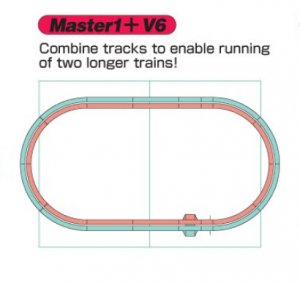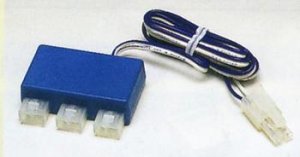johnmiller
New Member
I am planning a Kato N-Scale layout. My current plan is to use what I have purchased so far, the M1 Kato Master 1 Set, which has the Basic Oval and Power Pack; the V1 Kato Variation Mainline Siding Passing Set; plus the V6 Kato Outer Loop Set, which I want to purchase.
Illustrations of how the sets can be combined are here:
http://katousa.com/cgi-bin/dl/dl.pl?dl.mif,Layout-Plans.pdf
Towards the top right of the .pdf is the M1 Master Set + V6 Outside Loop example. I guess, just imagine the siding added on to that!
So, here's my question: All this combined track would more than double the original amount of track of the M1 set. Now, I would think that, as long as I don't put in a cross-over section, or join the two ovals in any other way, they would be independent. I would need two power packs, one for each oval.
But, if I did join them using a cross-over, etc., am I right that they would be one unit? And if that's the case, I would wonder if the one power pack would have enough juice to power the combined layout. If not, or if I wanted more power, how do I do that? Is there a booster power pack? Or, some other solution?
I would think that extra power is needed when the amount of track reaches some approximate point. I don't know if my layout would, but I am guessing there are certainly those that do!
Thank you very much for your time and assistance! I appreciate it.
Illustrations of how the sets can be combined are here:
http://katousa.com/cgi-bin/dl/dl.pl?dl.mif,Layout-Plans.pdf
Towards the top right of the .pdf is the M1 Master Set + V6 Outside Loop example. I guess, just imagine the siding added on to that!
So, here's my question: All this combined track would more than double the original amount of track of the M1 set. Now, I would think that, as long as I don't put in a cross-over section, or join the two ovals in any other way, they would be independent. I would need two power packs, one for each oval.
But, if I did join them using a cross-over, etc., am I right that they would be one unit? And if that's the case, I would wonder if the one power pack would have enough juice to power the combined layout. If not, or if I wanted more power, how do I do that? Is there a booster power pack? Or, some other solution?
I would think that extra power is needed when the amount of track reaches some approximate point. I don't know if my layout would, but I am guessing there are certainly those that do!
Thank you very much for your time and assistance! I appreciate it.



